1. Complication after surgical exposure
1.1. Lack of movement
1.1.1. -No movement on the tooth once orthodontic forces have been initiated. -This occurs more often in palatal impactions
1.1.2. Causes: 1. Not enough bone was removed around the crown of the impacted tooth. 2. Inappropriate orthodontic mechanics. Often a tooth will resist lateral tooth movement because of its angulation. 3. Ankylosis. If a tooth is found to be ankylosed during the surgery, forces should be placed on the tooth immediately. In some cases the tooth will not move and will need to be extracted. 4. Improper bonding. The orthodontic bracket is bonded to bone rather than the impacted canine.
1.2. Extraction
1.2.1. *Seldom as a treatment option, as it may severely compromise a patient's functional occlusion. *The extraction can be unavoidable in some cases such as if the impacted canine is malformed, ankylosed, unable to move after a period of orthodontic activation, severely dilacerated root, internal or external root resorption, or pathologic changes.
2. Why it's a problem?
2.1. 1- They often hinder orthodontic movement. 2- They may compromise esthetic appearance of smile. 3- They may compromise function. 3- They may cause resorption of adjacent roots.
3. Incidence
3.1. Maxillary canine is the 2nd most commonly impacted tooth after maxillary 3rd molar
3.2. the maxillary canine is more palatally than facially impacted with 2:1 ratio
3.3. incidence of mandibular canine impactions is much lower
3.4. Twice as common in females
4. Etiology
4.1. General factors e.g. Systemic diseases
4.1.1. Such as endocrine deficiencies, febrile diseases, and irradiation
4.2. Local factors (most common)
4.2.1. (1) tooth size/arch length discrepancies. (2) prolonged retention or early loss of the primary canine. (3)abnormal position of the tooth bud. (4) the prescience of an alveolar cleft. (5) ankylosis. (6) cystic or neoplastic formation. (7) dilacerations of the root. (8) iatrogenic origin. (9) idiopathic condition with no apparent cause. (10)Missing or peg lateral incisors.
5. Diagnosis of impacted canines
5.1. Clinical evaluation
5.1.1. palpate the canine bulge above the primary canine
5.1.2. Notice the clinical signs of canine impaction
5.1.2.1. retention of the primary canine beyond 14 to 15 years of age
5.1.2.2. absence of a normal labial canine bulge
5.1.2.3. asymmetry in the canine bulge
5.1.2.4. presence of a palatal bulge
5.1.2.5. delayed eruption, distal tipping, or migration of the lateral incisor
5.2. Radiographic evaluation
5.2.1. Buccal object rule
5.2.1.1. A- two radiographs are taken at different horizontal angulations. B- apply the SLOB rule which stands for same lingual opposite buccal C- If the object (impacted tooth) moves in the same direction as the movement of the x-ray beam, the tooth is located on the lingual D- if the impacted tooth moves opposite of the x-ray beam, the tooth is located on the buccal
5.3. Palatal vs. facial canine impaction
5.3.1. Facially impaction
5.3.1.1. only 17% of facially impacted maxillary canines have sufficient space for eruption into dental arch
5.3.1.2. more likely to have a favorable vertical angulation
5.3.1.3. have the potential to erupt without surgical intervention
5.3.2. Palatally impaction
5.3.2.1. 85% of palatally impacted maxillary canines have sufficient space for eruption into the dental arch
5.3.2.2. more inclined to be in a horizontal angulation
5.3.2.3. seldom erupt without surgical intervention
5.3.2.3.1. This may be because of an increased thickness of the cortical bone on the palate and the thick palatal tissue
6. Technique of surgical treatment
6.1. First Step
6.1.1. Presurgical orthodontic treatment
6.1.1.1. adequate space must be created to facilitate movement of the impacted canine into dental arch by bracketing the entire maxillary arch
6.1.1.1.1. Bracketing the entire arch will provide adequate anchorage for extrusion of the impacted canine
6.1.1.1.2. Or use a microim-plant or mini-implant as anchorage to move the impacted canine
6.2. Second Step
6.2.1. Surgical treatment
6.2.1.1. Buccally/facially impacted
6.2.1.1.1. Open approached
6.2.1.1.2. Closed approached
6.2.1.2. Lingually/palatally impacted
6.2.1.2.1. Often the primary canine is still present with palatally impacted permanent canines. Although controversial, it has been suggested that extraction of the primary canine be delayed because of the following possible benefits: -It holds space for the permanent canine, -It maintains the width of the alveolar ridge, -It avoids the need for an additional procedure since the primary canine can be removed during the uncovering procedure.
6.2.1.2.2. Closed flap technique
6.2.1.2.3. Trap door open technique
6.3. Third step
6.3.1. Canine exposure/ movement by orthodontic force
